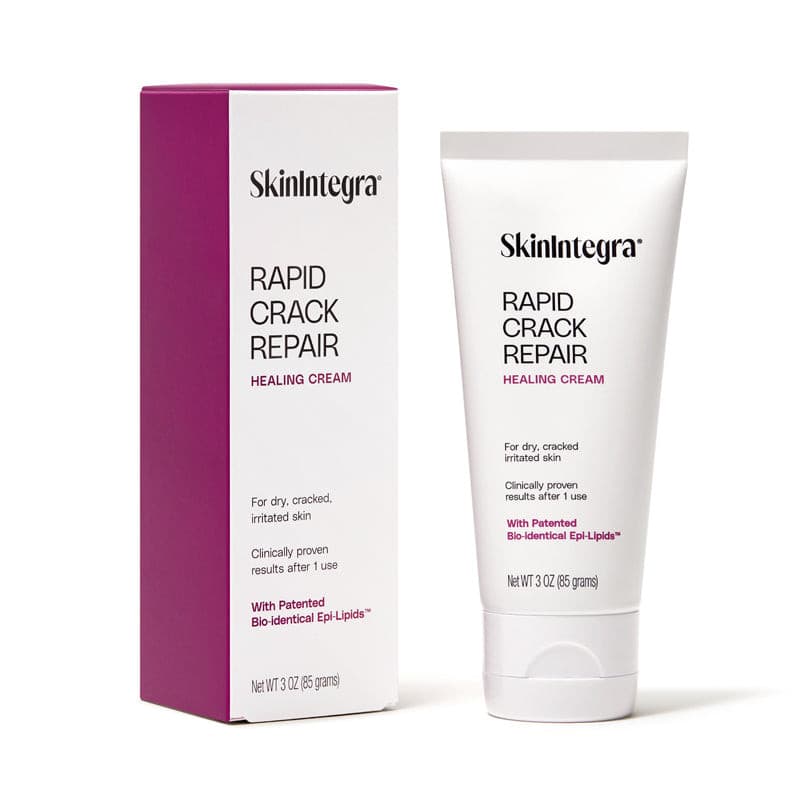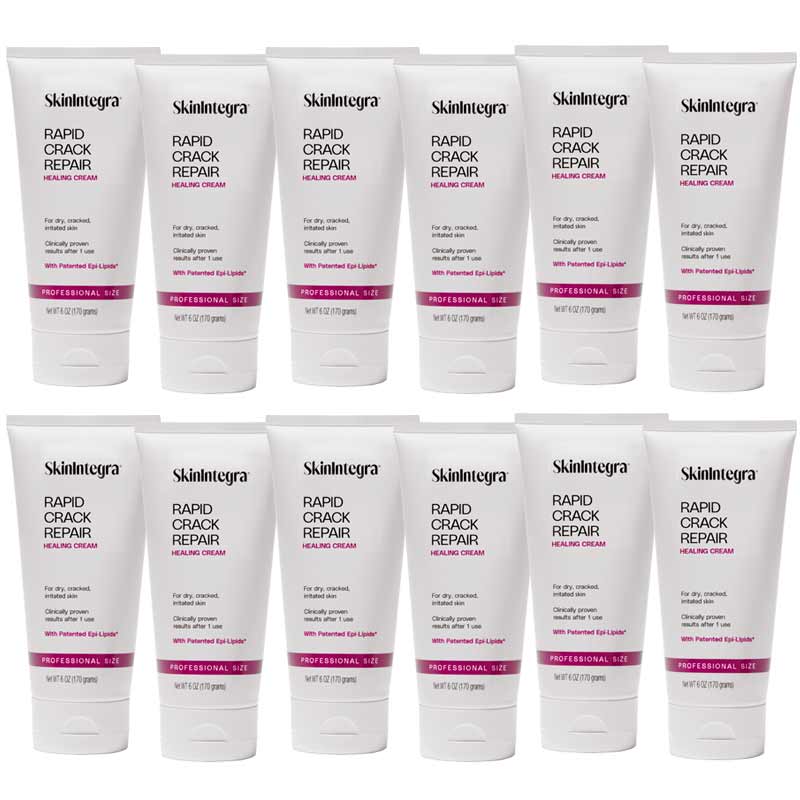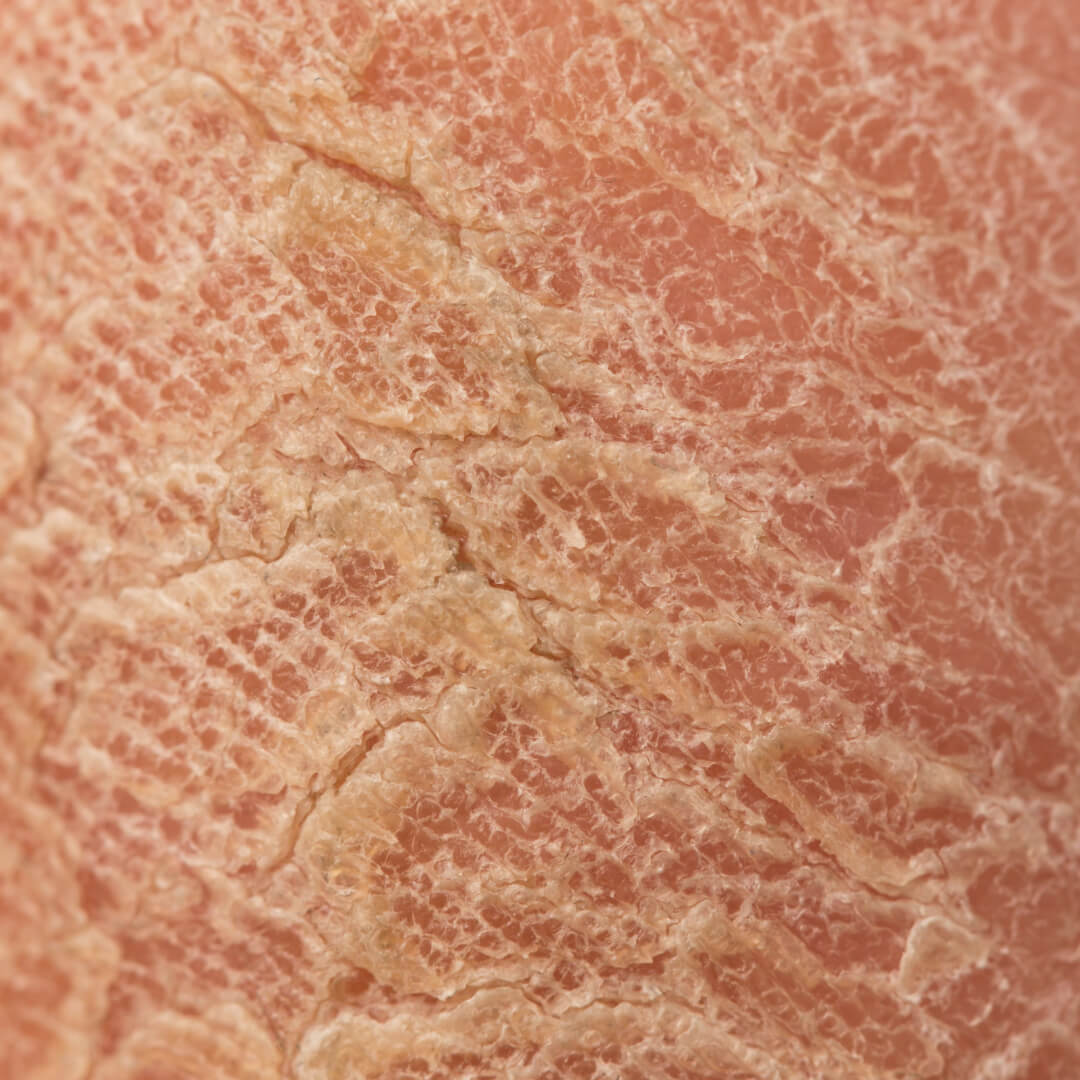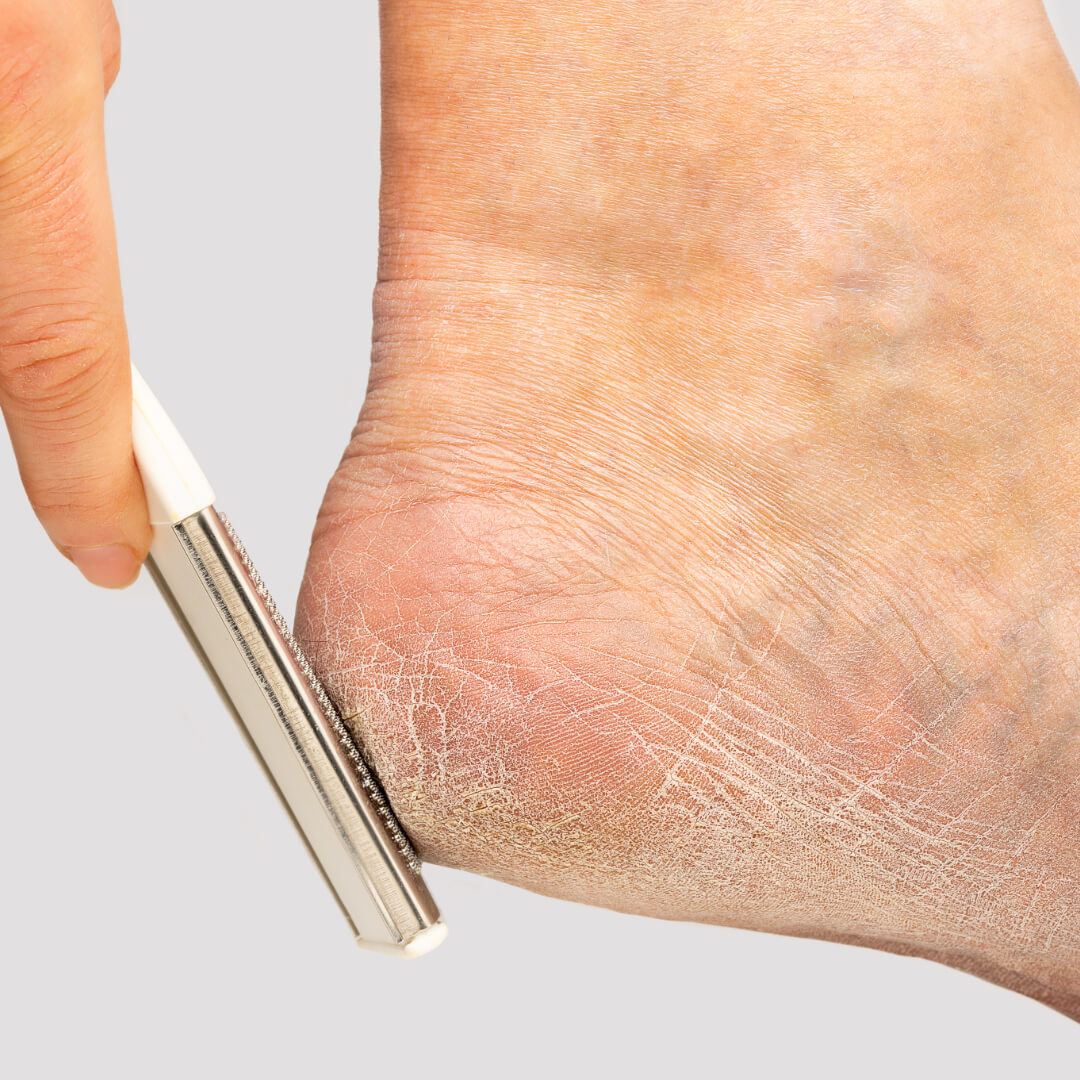Diabetic foot complications remain a leading cause of non-traumatic lower-limb amputations worldwide. While much of the clinical focus has been placed on blood sugar control, wound debridement, and offloading techniques, a key—yet often overlooked—component in preventing diabetic foot complications is the skin barrier itself. The integrity of the skin barrier plays a crucial role in protecting high-risk patients from infection, fissures, and ulceration.
In patients with diabetes, impaired wound healing, microvascular compromise, and peripheral neuropathy all contribute to fragile skin that is more prone to cracking, inflammation, and infection. Yet despite the mounting evidence, skin barrier repair is not always central to diabetic foot care protocols.
In this article, we’ll explore why the skin barrier should be a clinical priority in podiatric care for diabetic patients, the science behind barrier dysfunction, and why next-generation skin barrier repair formulations like SkinIntegra®—considered by many podiatrists the best cream for cracked diabetic feet—may offer a more effective, patient-safe solution for reducing complications.
The Skin Barrier: More Than a Moisture Shield
The skin barrier is not merely a passive defense layer. It is a biologically active structure that performs essential functions:
-
Prevents water loss (TEWL) to maintain hydration
-
Shields against pathogens and irritants
-
Reduces mechanical friction from footwear or pressure
-
Supports healing and cellular regeneration
At the core of the barrier is the stratum corneum, composed of keratinized corneocytes embedded in a matrix of lipids, ceramides, cholesterol, and fatty acids. This matrix is often described as a "brick and mortar" system—where any breakdown in this structure can compromise the skin’s ability to heal and protect itself.
For people with diabetes, maintaining this barrier is especially critical.
How Diabetes Compromises the Skin Barrier:
-
Delayed Skin Regeneration: Hyperglycemia interferes with normal keratinocyte turnover and fibroblast function, resulting in delayed re-epithelialization. This makes even minor skin breaks more likely to worsen rather than heal.
-
Reduced Sebum and Lipid Production: People with diabetes often have reduced lipid synthesis, compromising the “mortar” in the skin’s barrier. This lipid deficiency contributes to dryness, cracking, and increased trans-epidermal water loss.
-
Peripheral Neuropathy and Pressure Points: Neuropathy impairs protective sensation, allowing repeated trauma and unnoticed pressure to erode skin integrity—especially around heels and metatarsal heads. The result: fissures, calluses, and increased infection risk.
-
Oxidative Stress and Inflammation: Elevated blood glucose promotes oxidative stress, which damages skin proteins, lipids, and DNA. Combined with low-grade systemic inflammation, the skin becomes less resilient.
Pre-Ulcerative Risk: Calluses as a Warning Sign
Calluses may seem like a minor nuisance, but in diabetic patients they can represent a significant pre-ulcerative risk. These thickened areas of skin result from repeated pressure and friction—often in areas of neuropathy where patients cannot feel early signs of stress. If left unmanaged, calluses can conceal underlying hemorrhage or skin breakdown, progressing to ulcers.
According to the International Diabetes Federation, up to 25% of people with diabetes will develop a foot ulcer in their lifetime. Additionally, over 80% of diabetes-related amputations are preceded by a foot ulcer—underscoring the importance of early prevention.
Addressing calluses as both a symptom and a risk factor requires a two-fold strategy:
-
Clinical management through debridement and pressure redistribution
-
Ongoing skin barrier repair at home to reduce recurrence and strengthen the skin’s resilience
Conventional treatments for calluses often rely on urea 40 creams, which provide strong keratolytic action. However, while effective at softening thickened skin, these formulations frequently fail to address the underlying barrier repair needs—a critical gap for diabetic patients. Moreover, the high urea concentration can cause stinging, irritation, or over-exfoliation in already compromised skin, making them less suitable for ongoing use in high-risk individuals.
An effective barrier repair cream like SkinIntegra helps soften hyperkeratotic skin, reduce dryness, and reinforce the skin’s defense—making it less prone to repeated trauma and callus formation, without the irritation risk of stronger exfoliants.
Why Moisturizers Alone Aren’t Enough
While emollients and moisturizers can provide temporary relief, they often fall short in high-risk patients because they:
-
Don’t address lipid depletion essential for restoring the stratum corneum
-
Lack barrier-mimicking ingredients that support structural repair
-
Can contain irritants or fragrances unsuitable for compromised skin
-
Do not offer protective reinforcement against mechanical stress
In short, moisturizers may soften dry skin but do not repair the skin barrier. For diabetic patients with impaired healing, this distinction is not just academic—it’s clinical.
Skin Barrier Repair: A Clinical Imperative
Podiatrists are on the front lines of managing diabetic foot complications. Emphasizing skin barrier integrity in prevention protocols can help:
-
Reduce incidence of fissures and superficial infections
-
Delay or avoid progression to foot ulcers
-
Improve patient outcomes between visits
-
Support long-term diabetic skin health
Integrating barrier restoration into one's practice involves more than hydration. It requires the use of formulas that replenish lipids, protect the skin, and accelerate healing in a safe, non-irritating manner.
Choosing the Best Skin Barrier Cream for Cracked Diabetic Feet: What to Look For
|
Clinical Need |
Ideal Product Feature |
|
Hydration |
Urea (10–25%) for humectant and keratolytic action |
|
Gentle exfoliation |
Lactic acid or other mild alpha hydroxy acids |
|
Barrier replenishment |
Lipids, fatty acids, ceramides |
|
Antioxidant support |
Vitamins C & E or other |
|
Safety |
Fragrance-free, non-sensitizing, clinically tested on diabetic skin |
|
Speed |
Rapid symptom relief without irritation |
A product that brings these functions together can help patients heal faster and stay active, reducing complications and clinical burden.
Why SkinIntegra® Is the Skin Barrier Repair Solution

SkinIntegra® Rapid Crack Repair is an advanced skin barrier repair cream clinically designed for fragile, high-risk skin—especially for patients with diabetes. Unlike conventional moisturizers or thick petrolatum-based balms, SkinIntegra offers a multifunctional, evidence-based approach to skin restoration. It delivers both keratolytic and barrier-repairing benefits in one step—softening thickened, cracked skin while rebuilding the protective barrier that helps prevent further breakdown.
What Sets SkinIntegra Apart
-
Clinically Proven to Work Faster
In a head-to-head 4-week trial with a leading 40% urea cream, SkinIntegra’s formula delivered faster healing with less irritation on patients with pedal fissures. -
Safe for Diabetic and Compromised Skin
Formulated without harsh acids, preservatives, or fragrances, SkinIntegra is designed to be non-sensitizing and non-irritating, even on delicate skin. -
Patented Barrier-Renewing Composition
What truly sets SkinIntegra apart is its patented composition, engineered to precisely replenish what compromised skin lacks. This includes a clinically balanced blend of:
-
-
Skin-identical lipids and fatty acids to repair the stratum corneum
-
Antioxidants and minerals that reduce oxidative stress and promote skin resilience and renewal
-
-
Lightweight, Non-Greasy Texture
Unlike ointments that trap moisture but prevent breathability, SkinIntegra absorbs quickly while providing sustained protection. -
Endorsed by Podiatrists
Increasingly adopted in podiatry clinics, SkinIntegra is used to support proactive care plans, especially in patients at risk for cracking, fissures, or infection.
The Cost of Inaction: Skin Barrier Failure and Complications
Neglecting the skin barrier in diabetic foot care leads to:
-
Higher risk of secondary infection
-
Longer healing times and higher costs of care
-
Increased emergency room visits and hospitalizations
-
Greater emotional burden and reduced quality of life
A simple crack today can become a chronic ulcer tomorrow—unless we intervene early with the right tools.
For additional reading, explore:
-
How to Treat Dry, Cracked Feet with Diabetes Safely and Effectively
-
Cracked Heels That Bleed? Proven Treatments and Diabetic Care Tips
-
Urea vs. Lactic Acid for Cracked Heels: Which Works Better for Diabetic Skin?
FAQs
What is the skin barrier and why is it important in diabetes?
The skin barrier is the outermost layer that helps retain moisture and keep irritants out. In diabetes, it's often compromised, increasing the risk of cracking, infections, and delayed healing.
How does SkinIntegra help diabetic skin?
SkinIntegra combines urea, ceramides, and skin-identical lipids to hydrate, exfoliate gently, and rebuild the barrier—ideal for fragile skin.
What makes SkinIntegra different from other foot creams?
Its patented biomimetic formulation is designed to mimic and restore the skin's natural defenses, clinically tested for diabetic foot safety.
Is it safe for use on open cracks or fissures?
Yes, SkinIntegra is formulated to be non-stinging and non-irritating—suitable even for cracked skin.
How often should it be applied?
For best results, apply twice daily to clean, dry feet. Continue as part of a daily care routine to maintain skin integrity.
Conclusion: A New Standard for Diabetic Skin Health
For too long, diabetic foot care has focused downstream—on wounds, ulcers, and surgical outcomes. But the best clinical interventions are those that start upstream—by reinforcing the skin barrier before breakdown occurs.
Skin barrier repair is not just an adjunct—it’s a clinical imperative. By choosing products specifically designed for fragile, diabetic skin, podiatrists can protect their patients from painful, costly complications.





